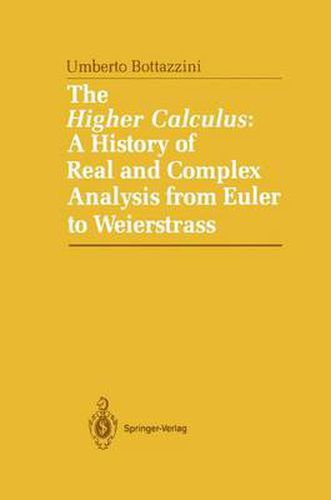Readings Newsletter
Become a Readings Member to make your shopping experience even easier.
Sign in or sign up for free!
You’re not far away from qualifying for FREE standard shipping within Australia
You’ve qualified for FREE standard shipping within Australia
The cart is loading…






This title is printed to order. This book may have been self-published. If so, we cannot guarantee the quality of the content. In the main most books will have gone through the editing process however some may not. We therefore suggest that you be aware of this before ordering this book. If in doubt check either the author or publisher’s details as we are unable to accept any returns unless they are faulty. Please contact us if you have any questions.
The true method of foreseeing the future of mathematics is to study its history and its actual state. With these words Henri Poincare began his presentation to the Fourth International Congress of Mathematicians at Rome in 1908. Although Poincare himself never actively pursued the history of mathematics, his remarks have given both historians of mathematics and working mathematicians a valuable methodological guideline, not so much for indulging in improbable prophecies about the future state of mathematics, as for finding in history the origins and moti va tions of contemporary theories, and for finding in the present the most fruitful statements of these theories. At the time Poincare spoke, at the beginning of this century, historical research in the various branches of rna thema tics was emerging with distinctive autonomy. In Germany the last volume of Cantor’s monumental Vorlesungell iiber die Gesehiehte der Mathematik had just appeared, and many new specialized journals were appearing to complement those already in existence, from Enestrom’s Bibliotheea mathematiea to Loria’s Bollettino di bibliogra/ia e di storia delle seienze matematiehe. The annual Jahresberiehte of the German Mathematical Society included noteworthy papers of a historical nature, as did the Enzyklopadie der mathematisehen Wissenseha/ten, an imposing work constructed according to the plan of Felix Klein.
$9.00 standard shipping within Australia
FREE standard shipping within Australia for orders over $100.00
Express & International shipping calculated at checkout
This title is printed to order. This book may have been self-published. If so, we cannot guarantee the quality of the content. In the main most books will have gone through the editing process however some may not. We therefore suggest that you be aware of this before ordering this book. If in doubt check either the author or publisher’s details as we are unable to accept any returns unless they are faulty. Please contact us if you have any questions.
The true method of foreseeing the future of mathematics is to study its history and its actual state. With these words Henri Poincare began his presentation to the Fourth International Congress of Mathematicians at Rome in 1908. Although Poincare himself never actively pursued the history of mathematics, his remarks have given both historians of mathematics and working mathematicians a valuable methodological guideline, not so much for indulging in improbable prophecies about the future state of mathematics, as for finding in history the origins and moti va tions of contemporary theories, and for finding in the present the most fruitful statements of these theories. At the time Poincare spoke, at the beginning of this century, historical research in the various branches of rna thema tics was emerging with distinctive autonomy. In Germany the last volume of Cantor’s monumental Vorlesungell iiber die Gesehiehte der Mathematik had just appeared, and many new specialized journals were appearing to complement those already in existence, from Enestrom’s Bibliotheea mathematiea to Loria’s Bollettino di bibliogra/ia e di storia delle seienze matematiehe. The annual Jahresberiehte of the German Mathematical Society included noteworthy papers of a historical nature, as did the Enzyklopadie der mathematisehen Wissenseha/ten, an imposing work constructed according to the plan of Felix Klein.